13 september 2021
1. Flood level marks on oak tree beside Maas river near Maastricht, NL.
2. Beaver bite marks on tree beside Maas river near Maastricht, NL.
3. Plastic bags and other detritus caught in trees after flooding near Maastricht, NL.
2-24 september 2021
1. Duck weed bloom on Delfhavense Schie, Rotterdam NL
2. Video of duck weed bloom, Berkelse Zweth between Rotterdam and Delft, NL
7 august 2021
1. Ritual Artefact in Rijksmuseum van Oudheden in Leiden, NL.
2. Description of artefact: "This plank was left in a well leaning against an alder post...the wood carving's function is unknown but it is probably a ritual object...perhaps the object symbolised some kind of water deity?"
12 august / 28 september 2021
1. Boat on the shore of East Terschelling, one of the Wadden Islands, NL.
2. Dunes at the coast of Hoek Van Holland
july - august 2021
1. Dying and patterning fabrics using rusted metal objects collected from the bottom of Delfhavense Schie by "magnet fishers". Wrapping objects in cotton.
2. Rusted objects wrapped in cotton once removed from around a month submersion in the canal.
3. Fabric once rinsed and fixed with salt. Rust has left behind patterns and prints.
spring - autumn 2021
1. Weekly swims on Sunday morning with neighbours in the Delfavense Schie. Sunday is the only day that the bridge does not open for larger vessels meaning the waterway is cleaner and less busy.
21-27 may 2021
1. Umbrella relocated in the canal after strong winds.
2. Rope washed up on beach near Zandmotor beach near Den Haag, NL
13 september 2021
1. Night time pacing along the Maas river, Rotterdam NL.
6 june 2021
1. Non-native crayfish dwelling in the Berkelse Zweth between Rotterdam and Delft, NL
14 may 2021
1. Polder near the Ackerdijse Plassen between Rotterdam and Delft, NL. A polder is a method of managing water, creating channels to drain water from fields so that they can be farmed.
2. Drawing of imagined stack of peat taken from the area of Ackerdijske plassen.
3. Heron or Reiger (in Dutch), a common bird in the Netherlands in the area near Ackerdijkse plassen, NL.
16 march 2021
1. An Earthworm is called a Regenworm in Dutch, because they become visible above ground after rain (regen).
05 december 2021
1. Walking with the flow of the river. From Broekpolder to Vlaardingen centrum
12 december 2021
1. Walking with the flow of the river. Delfshaven towards Overschie:
"Traveling with the barge was a social affair, people often spent hours together on the barge. During the trips, the latest news was exchanged among each other, but the tow barge was also an ideal way to distribute pamphlets. The pamphlet, also known as a 'boat talk', was a report of an event or a way of disseminating opinions, often with a political overtone. The barge chat was recorded as a conversation that was conducted on the barge between different people and often had an anonymous sender. The advantage of the tow barge was that passengers, once they arrived at their destination, each went their own way. The tow barge was a place where you could express your opinion and was regularly a haven for discussion."
20 december 2021
1. Ik ben gezakt, in Dutch means I have failed (the test). A suggested root of the word gezakt (zakken, also pockets) is sack, or whatever is put into the sack sinks. In dutch, to fail is also to sink.
Image of embroidered river flow on blanket.
03 january 2022
1. Bike journey starting from Rotterdam and ending at the sea in Hoek van Holland. Aborted midway due to strong incoming winds. Took the metro to the coast then cycled inland with the wind to our backs. Visited the Maeslantkering, the storm surge gates that stop an influx of water coming inland via the Nieuwe Maas during extreme storms.
10 january 2022
1. Message from a friend standing on the other side of the water.
09 february 2022
1. Sticks and reeds floating on the top of Oosterplas, a lake in the dune area of Zuid-Kennemerland National Park.
2. View of the Oosterplas lake.
10 february 2022
1. Archival image of boys diving from the Aelbrechtskade into the Delfshavense Schie. In the background: the Mathenesserbrug. 1959, from Rotterdam Stadsarchief.
2. Archival image of people swimming in "Hazardous swimming areas" on the Delfshavense Schie. 1959, from Rotterdam Stadsarchief.
3. Finish of the 16-year-old Erica Terpstra who won a 3 km swim race against the ladies in the Delfhavense Schie. 1959, from Rotterdam Stadsarchief.
12 february 2022
1. Fossilised tooth found on Maasvlakte 2, Netherlands. A deer or elk tooth (identified by Hester Loeff and confirmed by oervondstchecker). The tooth is middle pleistocene era, at least 120,000 years old. Maasvlakte 2 is a manmade area formed from dredged sand from the North sea resulting in a fossil rich beach, often Doggerland artefacts.
2. Potentially bone fragment found on Maasvlakte 2.
3. Common starfish with 6 legs found on Maasvlakte 2 after stormy weather. Starfish are able to regenerate limbs, sometimes they regrow two limbs in place of one. "Each arm contains a copy of vital organs and is equipped with eyespots[...] and tube feet" (wikipedia)
13 february 2022
1. In dutch, freshwater is called zoetwater which literally translates to 'sweet water'.
22 february 2022
I’ve got a seal body
The kind of fat
that lets me slide beneath ice,
Winter’s skin.
Seal body is rounded, dense
Doesn’t look like
bodies should look
Insulated for rising seas
Ready to swim against
licking waves.
I’m grey, colour of fog
Or North sea vista
Or twilight river
On the cusp of becoming
a constellation.
Seal body slowly
submerges with intentional
breath, of kindred
oceanic undulation.
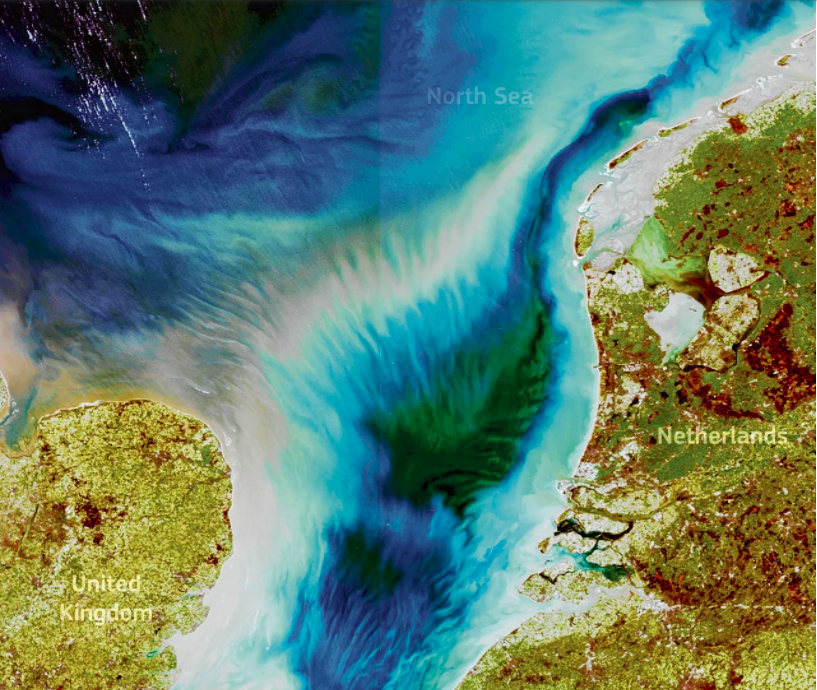
4 march 2022
1. "This is what the North Sea looked like after storm Eunice, seen from a Sentinel-3. This is a European satellite that orbits the Earth at an average height of 815 kilometers. The satellite image was taken on February 26. On Friday, February 18, a severe storm swept across Northern Europe. In the Netherlands, the speeds of the wind gusts rose to 145 kilometers per hour. In England winds were blowing even harder than 180 kilometers per hour. The storm also affected underwater. The strong wind caused waves of seven meters high in the North Sea. Large amounts of sediment were thereby moved, presumably with the westerly wind, from England to the Netherlands. This can be seen in the satellite image as huge light brown plumes that reach from the English coast to the Dutch coast. The dark green spot in the center is probably plankton." Source: NRC. Image: European commission.
21 may 2022
Rising sea levels, watery disasters. The dead man in the water was a premonition.
Here, the water is death, of floating fish and trash. Here the water is life, of blooming duckweed and honking migratory geese.
People say don’t swim in the water. The fuel from the boats, the algae, the waste, the chemical run off. People say don’t swim, it’s dirty as sin in there. The water is a pathogen, creeps into the body and takes control. The water makes unhealthy bodies, they say. I see in the city archives pictures of swimming competitions and smiling children diving into the water here. I question if the water was cleaner or dirtier then, or whether perception morphed, turned collective ideas of the water into an illness.
When I swim in the water I imagine putting my head under, taking a gulp, allowing the filth inside of me. When people write of sea swimming, they taste the salt water on their lips, feel the crystals dry on their skin. In this water I feel the paranoia of toxin rest on me, threatens to journey into my pores. Sickness, did this water make me sick? Sick, it’ll make you sick they say. Did the water reach my brain, make me flow the wrong way or make me stagnant?
I’m just gunna swim in the grime. Let it mutate me, let it get inside of me, let it change me.
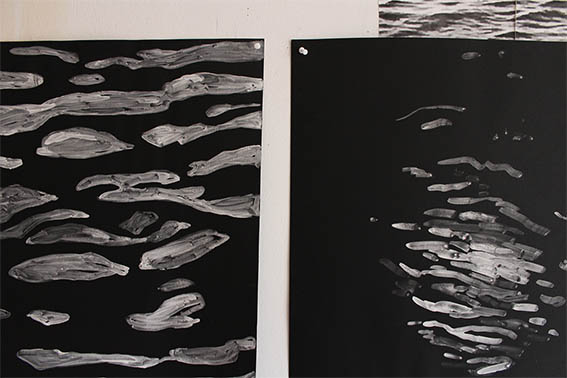
12 May 2022
1. Chalk paint made from chalk deposits from Seven Sisters cliffs, East Sussex UK.
09 February 2022
1. Indian ink, walnut ink, canal water on paper.
2. Close up of Indian ink and canal water on paper.
25 March 2023
1. Semaphore structure on Hoek van Holland coast, 1904
2. Semaphore structure on Hoek van Holland coast, 1915
3. Semaphore structure on Hoek van Holland coast, 1970
"As early as the end of the nineteenth century, a scaffold was set up near the North Pier, where, with the help of balls and cones, information on wind force and water level was provided. In 1917, the construction of a new semaphore tendered. The framework with reed balls and cones gave way to a similar framework but now with square and circular iron boards. The signal box building became a lot bigger. As in IJmuiden, the Germans demolished the semaphore during the Second World War and built a bunker in that place, as part of the Atlantic Wall. In 1950, a new signal box was built on the bunker. This received radar in 1956. This semaphore has served until 1981."
Translated from vuurtorensinnederland.nl
Images from kustverlichtingsmuseumhoekvanholland.nl
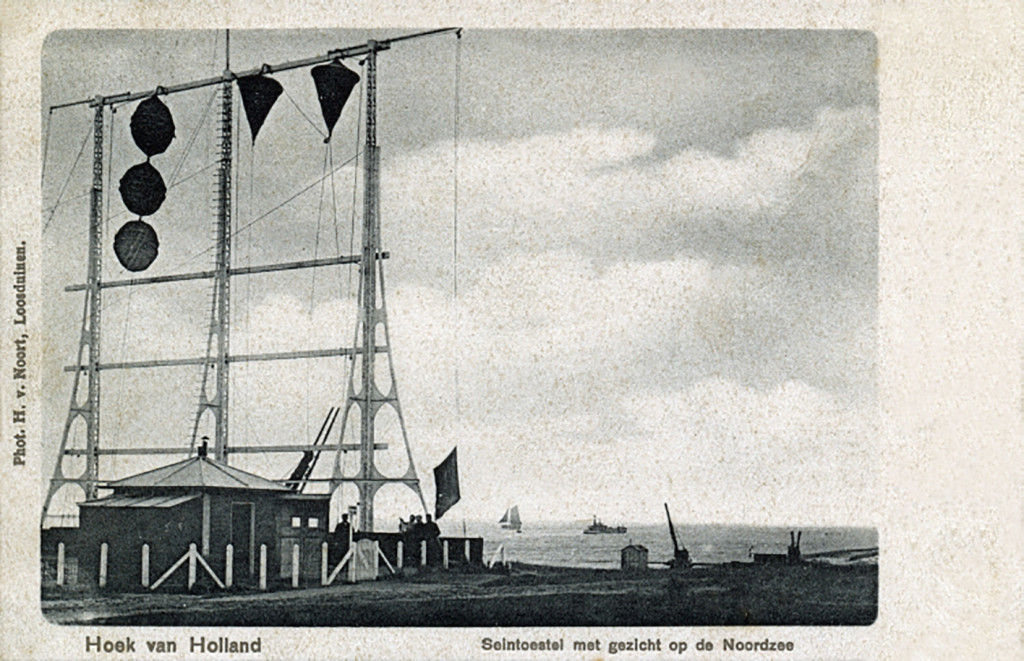

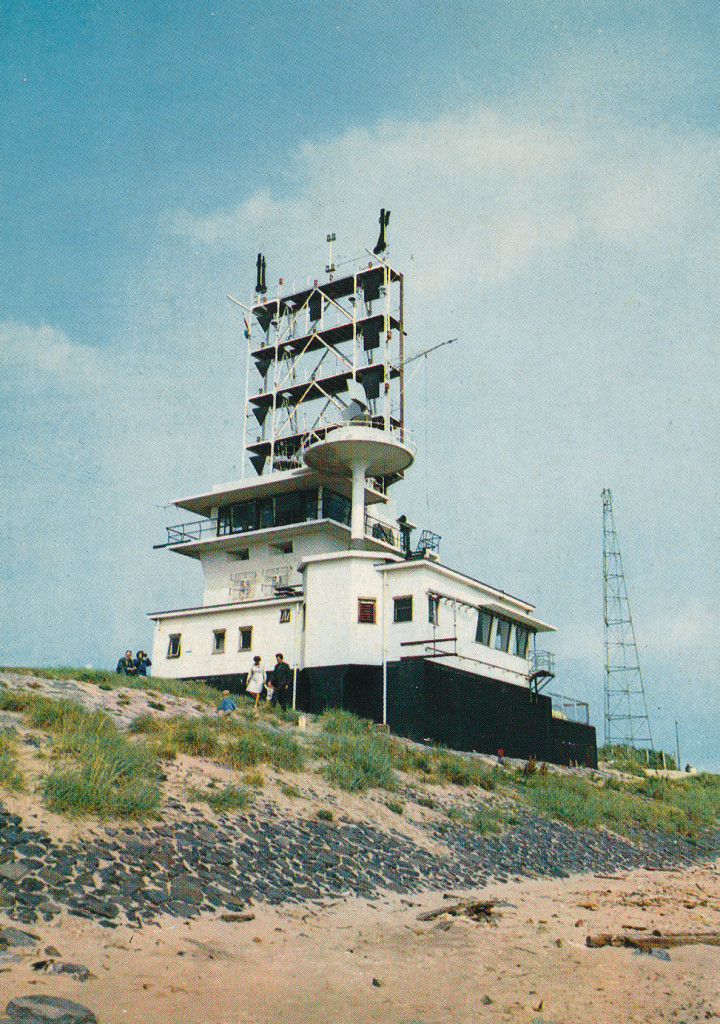

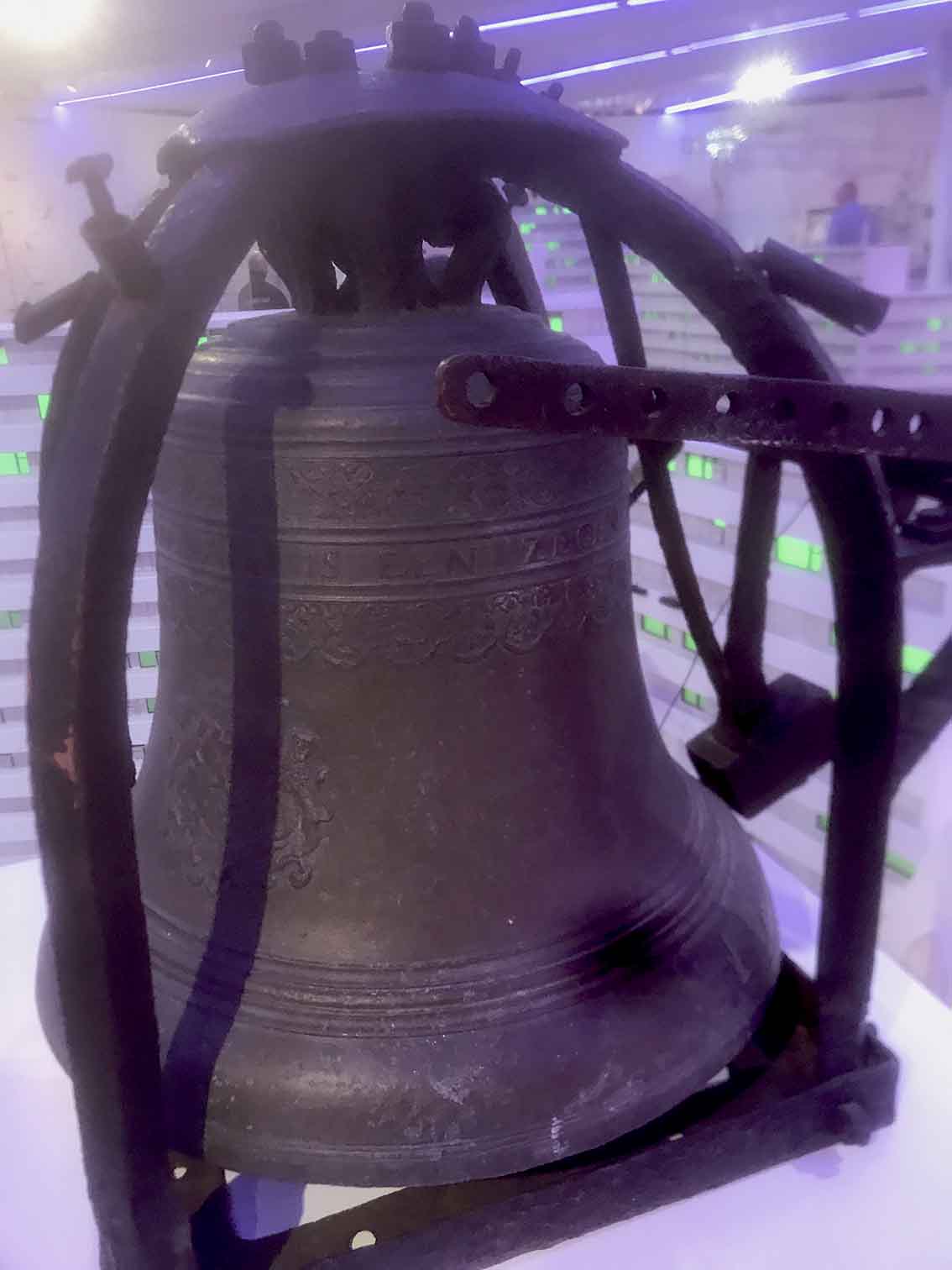
24 August 2022
1. A wooden alarm or clapper used to alert residents to flooding, 20th century.
Until 1850 this clapper is used by the night guard or watchman, calling out the time as they make their rounds in Schiedam every night. The guard at Hoofd has another important task - they must wake up the lock-keeper by rattling the clapper if there's a danger of flooding.
2. De Gorzen flood alarm, 1757
This alarm bell sounds in De Gorzen when there's a threat of high water levels, warning residents on and around Hoofdstraat. The bell, previously used elsewhere, has an inscription saying 'to be mild in prosperity is a blessing' (In voorspoed mild te zijn is een zegen)
Stedelijk Museum Schiedam
30 March 2023
1. Collecting fishing line from Hoek van Holland beach and creating nets.
Not a postcard.
Rivers which take no heed of borders. I take the path to the river which begins at the old city walls. Forts built across the mountains to protect from attack, to tower above enemies, to disguise life and render it as another grass covered peak. I cross through the walls, stumble over some loose earth which is being investigated by miner bees. I head underneath an archway, someone has placed a wooden pallet on the ground which resembles an adhoc drawbridge. It’s the threshold between the inside and outside. In a landscape of epic mountains this path is no hero. Carved by persistent footsteps, it runs through a small scrubby woodland before meeting the water. As i descend I hear the rustle of lizards retreating from their positions basking in the alpine sunshine. I take a moment, staying still enough to watch two emerge, heads twitching in suspicion of my silhouette. Further on a Painted Lady butterfly rests, wings like tattered lace, no doubt a hibernator with the wounds of last year's survival. I watch a deep-ginger bee resting on a flower which emerges alien-like from between rocks. I have met the river. The water knows its path, undulates over gray boulders, rests for a second then gains speed. Although suspiciously clear, the surface holds an infinity of lines drawn as watery ciphers. Everything here is about borders. Or about defying borders. Or about bodies and spirits which refuse borders. A few hours from here is the source of the river Meuse, flowing from the ground in France and traversing its way to the north sea on the coast of the Netherlands where I live, where its name changes to Maas. Everything is about borders and everything is about refusing borders. Crouching on rocks i stare at small dark shapes which cling to the peripheries of the river's edges. I pick one out between my fingers, recognise it as a Caddis fly larvae casing. Then I notice that some of the objects in the water are moving, intricate sculptures of miniscule rocks, sand, glass pieced together as a temporary shell for this insect to develop. They crawl like the smallest of hermit crabs beneath the water's surface. I make my way back to the path littered with detritus which I imagine was once thrown over the city walls, shards of broken plates and cow femurs cling to the soil. A dog starts to bark, I sense his territorial annoyance and decide to rest for a minute and watch my surroundings. Grey wagtails tussle in the air, dive to rest on boulders in the river, their bodies bouncing up and down as if they are counting the seconds. There is a black and white bird who also sits on a rock in the flow of the river, a round creature puffed up and pensive. Perhaps a European flycatcher…or more likely a White-throated Dipper, I question myself and decide a name is unnecessary. I ascend the path, a group of children have arrived with maps and are running up and down the hill with endless energy. Lizards retreat, but one is a little more bold. Unlike the others he shines like a jewel in shades of luminous green and blue, as if he is wearing a carnival costume on a grey city centre high street, a beautiful anomaly.
29 march 2022
29 July 2022
Float
Seaweed cyanotype floats in a rock pool dense with seaweed.
North Antrim Coast.
April 2023
Basalt Pillow
Granite Pillow
Red cabbage anthrotypes on cotton.
July 2022
Channeled wrack seaweed I found on the beach at Rathlin Island.
2022
Channeled Wrack Seaweed pin.
15 August 2022
Remembering the feeling of my twisting spine.
